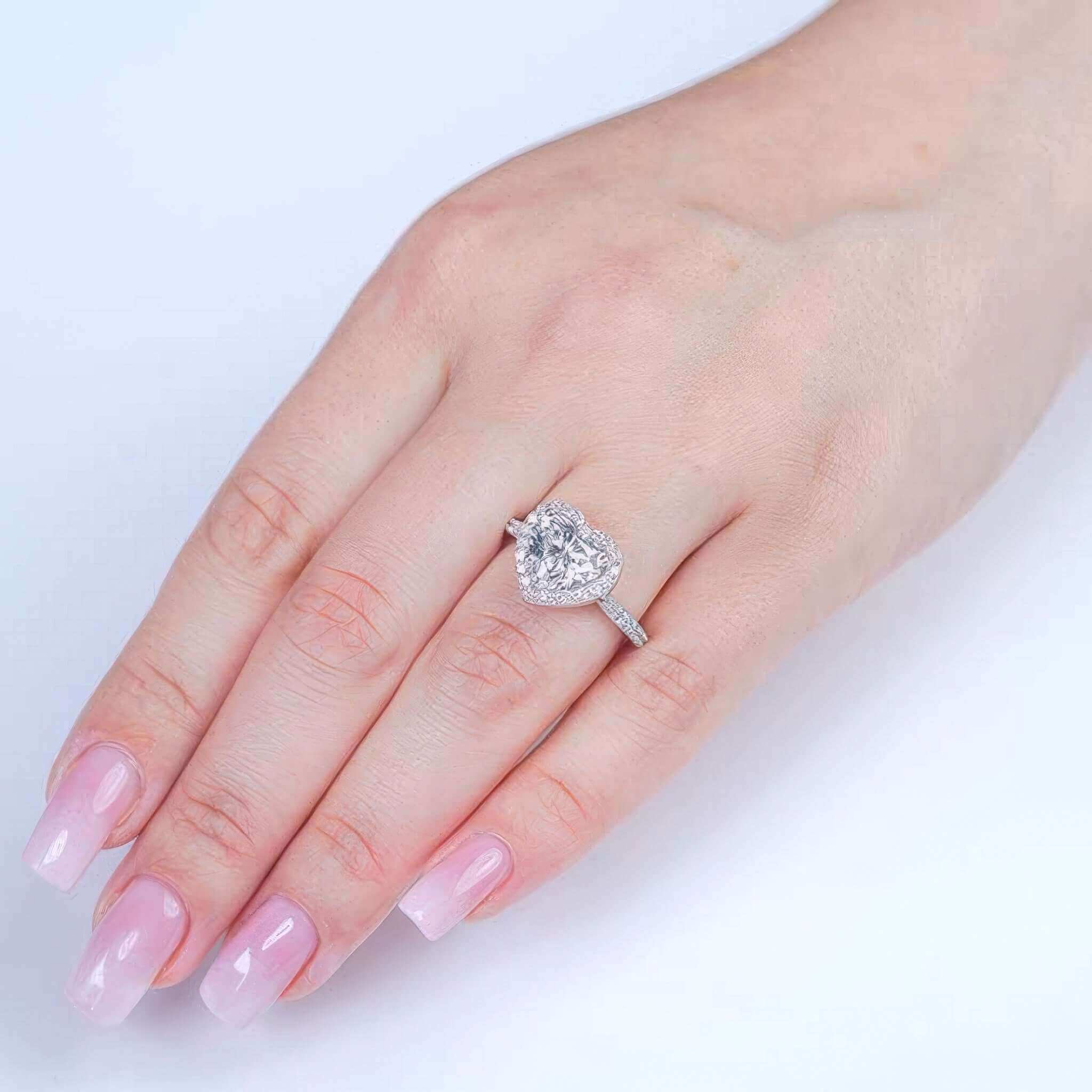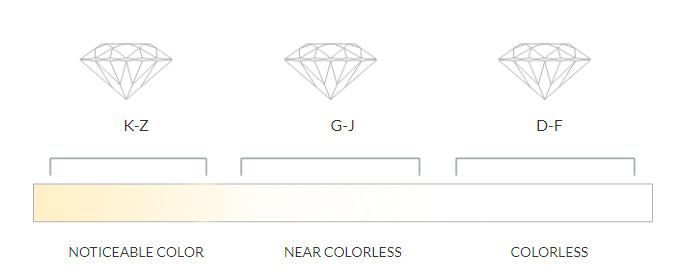
The 4 Cs Of Diamonds
The 4 “Cs” of a diamond are the industry standard way of determining the quality and value of a diamond. They are listed as follows: the Cut, Clarity, Color and Carat of a diamond.
As a consumer interested in buying a diamond, you will pick a rating from each category to determine the final price and quality of your diamond.
Each category has a different naming convention, however in general they are all ranged scales that go from fair to excellent, low to high and so on.
This guide is intended to educate you on how to select a rating from each of the 4 “Cs” to make sure you buy a diamond that will sparkle bright, looks beautiful and holds its value as an investment.
1. Cut
The cut of a diamond is basically its proportions, symmetry and polish. It’s based on how the diamond cutters “cut” or shape the diamond’s many facets. A very well cut diamond will capture light and reflect it back to the human eye resulting in that “bling” effect that we all look for in a diamond. On the other hand, a poorly cut diamond, will not sparkle as much as light travels mostly straight through the diamond and very little is reflected back to the human eye.
For a diamond cut, you will be choosing between: Excellent (Ideal), Very Good, Good and Fair.
- Excellent (Ideal) Cut: has excellent polish and symmetry and provides the most sparkle
- Very Good Cut: has great polish and symmetry and lots of sparkle
- Good Cut: has good polish and symmetry and a good amount of sparkle
- Fair Cut: doesn’t sparkle very much and has fair polish and symmetry
👉 NOTE: FANCY SHAPED DIAMONDS (DIAMONDS THAT ARE NOT ROUND I.E PRINCESS, CUSHION, RADIANT AND SO ON) DO NOT COME IN EXCELLENT OR IDEAL CUTS, THEY ARE EVALUATED EXCELLENT OR IDEAL BASED ON THEIR SYMMETRY AND POLISH.
2. Clarity
The clarity of a diamond refers to the natural inclusions (imperfections) that are present within the diamond. These irregularities come in many shapes and forms however to the general public (they look like small dots) that can be either seen through the naked eye or with the help of magnification. In general, the less inclusions the diamond has, the better quality it is and therefore more expensive.
For clarity the grading system is as follows: FL,IF,VVS1,VVS2,VS1,VS2,SI1 and SI2
- FL (Flawless): extremely rare diamonds that have no surface imperfections whatsoever
- IF (Internally Flawless): have no visible inclusions even under magnification
- VVS1 (Very Very Slightly Included 1): without magnification, inclusions are not visible to the naked eye
- VVS2 (Very Very Slightly Included 2): lower than VVS1 and again without magnification inclusions are not visible to the naked eye
- VS1 (Very Slightly Included 1): tiny imperfections can be seen upon close inspection
- VS2 (Very Slightly Included 2): lower than VS1, tiny imperfections can be seen upon close inspection
- SI1 (Slightly Included 1): small inclusions are visible to the naked eye
- SI2 (Slightly Included 2): lower than SI1, small inclusions are visible to the naked eye
Diamond Inclusions
inclusions play a major role is the price of a diamond. A clean diamond is quite rare, so usually most diamonds will have some sort of inclusions in them.

3. Color
The color of a diamond or lack of, plays a major role in determining the quality and value of a diamond. Generally speaking, the less color the diamond has (colorless or white) the more valuable it becomes. On a scaling system, the colors range from colorless or white all the way down to a noticeable yellowish / brownish color.
For color the grading system is: D,E,F,G,H,I,J,K,L and beyond.
D, E and F are considered to be the whitest possible or colorless, in the mid-range you have G, H, I and J which are considered nearly colorless and finally on the lower scale K, L and beyond it begins to show signs of some coloration.
Diamond Colors
The color of the diamond also plays a major role in it's price. colorless or white stones are most expensive.

4. Carat
Finally and probably the one that is most commonly known to the public is the carat. The carat of a diamond is a measure of how much a diamond weighs. It’s also worth noting that carat also relates to the size of the diamond as well.
👉 NOTE: TWO SAME SIZED DIAMONDS THAT LOOK IDENTICAL CAN STILL HAVE DIFFERENT CARAT WEIGHS DUE TO THE QUALITY OF THE CUT AND SHAPE OF THE DIAMOND.
Finally and probably the one that is most commonly known to the public is the carat. The carat of a diamond is a measure of how much a diamond weighs. It’s also worth noting that carat also relates to the size of the diamond as well.
Diamond Sizes

Congrats! You now have the full knowledge and expertise to purchase a diamond of your dreams. Go ahead and visit our diamond search and apply your newly acquired knowledge to browse our diamond inventory and find that one perfect sparkly stone!





